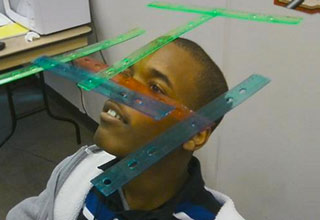This past weekend I attended The Fitness Summit in Kansas City, MO. It was my third year in a row not only attending, but speaking as well. It’s easily one of my favorite events each year.
Not only for the huge honor of being invited to speak, but also for the people. It’s truly more of a “lets get together and hang out1” thing than it is a formal fitness event.
Ladies and Gentlemen: your 2016 Fitness Summit speaker panel.
I’ll spare everyone the words of adoration and brown-nosing (you can read that on my Facebook page), but suffice it to say: if you’re a fitness professional or just someone who enjoys watching Bret Contreras and Spencer Nadolsky’s man-crush for one another grow by the second lifting heavy things, than you owe it to yourself to attend.
As we boarded the plane early Thursday morning, Pete Dupuis (Cressey Sports Performance’s business director and fellow presentee) had a brilliant idea. If we were going to be stuck on a plane for 3+ hours, why not produce some blog content?
We decided to jot down a few fitness-business related questions for one another and then do a laptop exchange.
Note to Pete (after the fact): fingers crossed you didn’t click the icon labeled “Tony’s Titillating Tickle Fights” on my desktop.
If so: you’re welcome.
If not: shoot me a PM.
You can check out what I wrote for his website HERE.
And you can check out what Pete had to say below.
Enjoy!
TG – You have an MBA from one of the most prestigious business schools in the US – Babson College – which I know has served you well as an entrepreneur. Yet, I have heard you say several times that “business” is every bit as much about common sense and “feel” as anything else. Explain.

PD – I’ve been asked the question “was your MBA worth it” on more than one occasion in recent weeks.
I should probably start my answer by mentioning that I didn’t go back to school in 2006 with the intention of accumulating the skills necessary to run a profitable fitness facility. In fact, Eric was living and coaching in Connecticut when I enrolled, and I didn’t even know who Tony Gentilcore was at the time.
The idea of owning a fitness business was about as likely as me pursuing my dream job as the starting goalkeeper for the US Men’s National Soccer Team.
I had hit a point in my young career where it was becoming clear that my ceiling as a Marketing Manager in a publicly traded company was considerably lower than what I had in mind for my professional future. The economy (and job market) weren’t exactly thriving in 2007, so I decided pursuing an MBA at that moment in time was what made sense for me.
There were some skills acquired during my undergraduate and graduate level business school courses that have been immensely valuable, and others that have been filed away in the “stuff I’ll never apply” folder in the back of my mind.

One of the most useful learning experiences I covered would be the Introduction to the Microsoft Office Suite course that delved into the minutia of each application. I’d imagine that for a couple hundred bucks, anyone could enroll in a similar course at a local community college and suddenly become a rock star at writing macros in Excel.
As you’ve mentioned, I like to say that 99% of operating a profitable and efficient fitness facility is application of common sense. Don’t spend more than you collect, and you’re in business for as long as you can tolerate the entrepreneurial grind.
Lastly, and arguably most importantly, I’d encourage all fitness professionals to continuously embrace and develop the art of networking. If there’s one thing you fine-tune during an MBA program, it is the skill of professional small talk.

TG – One of the things that CSP has done very well, and prides itself on, is allowing the opportunity or “window” for the staff and coaches to use the CSP brand to build their own brand.
Can you explain why it behooves other small (fitness) businesses to follow suite? Personally, I think it’s a huge mistake when I hear stories of gyms telling their coaches/trainers that they can’t start their own website or generate other revenue streams.
PD – As it turns out, the answer to this question makes up just about 50% of my presentation content for this weekend’s event, titled “Empowering Your Fitness Team.” Here’s a look at the three big takeaways:
For starters, when your employees have the autonomy to explore the development of their own brand and identity within this industry, they are more likely to coach as the most authentic version of themselves on the training floor of your gym. I want my employees to influence the personality of my brand, and not the other way around.

The second reason that I encourage my team to pursue personal brand development is that it allows employees to increase earning potential through writing opportunities, speaking engagements, etc.
If I can assist an employee in increasing earning potential without it impacting the bottom line of my business, I’m going to do it.
Lastly, CSP coaches who successfully establish their own business within our business are more likely to think entrepreneurially as it relates to the growth and development of your gym. They also carry a little more credibility in the eyes of a new client who happens to remember having seen their name in the pages of an issue of Men’s Health or in a guest post on Eric Cressey’s website.
TG – How much does CSP miss Tony’s Techno Thursdays?
PD – About a 6 on a 100-point scale.
TG – I know it’s generic to ask, but it’s still a relevant question for any person contemplating opening their own facility: what are the TOP 3 things to consider/ask one’s self on the topic?
PD – These are the 3 questions I’d ask myself if considering starting a gym from scratch today:
Q1. Do I have something unique to offer?
Is my training model going to introduce something new to the existing set of gym options in my immediate area, or am I simply recreating the offerings of my future competition? If I’m not unique, I’m selling a commodity product. Commodity products compete on price, and that’s a horrible place to be as a gym owner.
Q2. Have I identified “my ten” and run it by them? I recently stumbled upon a fantastic blog post from Seth Godin titled “First, Ten.”
Godin explains that the best way to determine whether an idea or project is worthy of further pursuit is to run it by your ten most trusted confidants, and see if they bother to tell someone else about it.
If they decide to spread your message organically, you’ve got something solid on your hands.
Otherwise, you toss it in the trash and move on to the next endeavor. So, the question becomes: Did “your ten” bother telling friends you were thinking about opening a gym?
Q3. Have I fully come to terms with the realities of owning my own business?
TG – Can you elaborate on why you feel offering FREE consultations is not a wise choice for fitness professionals?
PD – Absolutely. Check this piece out.
TG – Trainers/coaches/gym owners think that getting their names in national publications is the key to success, when in fact it’s LOCAL exposure that pays the bills. What are some hard hitting strategies you’d suggest to anyone looking to increase both their local exposure and lead generation?
I’m sad to say that I didn’t embrace Facebook advertising until just recently. It is quickly becoming an efficient and affordable tool for us. I can’t think of a more effective way to allocate our advertising dollars in a targeted manner, so investing in Facebook ads would be my first piece of advice to those looking to spend toward the pursuit of lead generation.
.svg/2000px-Facebook_New_Logo_(2015).svg.png)
We’ve managed to minimize our marketing investment over the years by instead focusing on helping our brand to grow organically within our general area.
This happens quickly when you demonstrate how much you care first, and how much you know later.
We attend baseball games. We show up to watch our clients play a gig with their garage band. We make ourselves visible in the community outside of our facility. There’s a whole big world of potential clients outside the walls of your little fitness playground, and sometimes you need to leave your comfort zone and have actual conversations with people.





